Another day, another island

|
Our position is 17:08.851N 62:37.819W
We failed to leave Antigua quite at first light but, after waving goodbye to Tom and Jos on Pelekan (who had given us a lot of good advice about the islands we wanted to visit) we got away early enough to have a pleasant downwind sail to Montserrat, arriving at around 1pm with the help of the West-going current. Our worst fears were realised with regard to the bounciness of the anchorage and Ted was not happy with the set of the anchor and so deployed the new Fortress anchor as well. There were only 2 other yachts in the anchorage and one of those left just as we were about to go ashore. The formalities took longer than I’d hoped for as I had filled out all the forms online using the e-sea clearance system. However I didn’t print them – merely went in with the reference number - and their systems didn’t seem to be working (or they didn’t know how to use them) as we had to fill them all in again (many times!) and wait for the immigration office to return from doing his shopping and chatting up one of the girls on the port gate, before we were able to jump into the taxi we had radioed before leaving the boat. Joe (call sign Avalon) looked quite a bit older than his picture in the Chris Doyle guide, but he was certainly very knowledgeable and was able to tell us all sorts of eye witness stuff about the various volcanic eruptions and their impact on the island as well as blag his way past the guard on the gate to the southern (now uninhabited) part of the island with only 15 minutes to spare before they shut for the night. He was inordinately proud of the informative leaflets he had produced, one about the cultural centre – funded by Sir George Martin as there used to be a recording studio on the island in the 70s and 80s, used by just about every famous name you could think of from that period – and one about volcanoes and the history of the volcanic activity on the island. He also carried with him a collection of photographs taken both before, during and after the eruptions so we got a really good idea of the impact of the disasters. He had had to abandon his house when the area was evacuated and before that his previous house was destroyed by a hurricane, but he seemed very stoic and was in the throes of building another house, that he hoped to move into before Christmas (I guess in the circumstances we were a mixed blessing!) The whistle-stop tour of the closed area showed us roads destroyed by pyroclastic floes and the old capital buried under dust and ash. All that can be seen of one church is the top of its steeple. We went to an abandoned hotel and walked on the swimming pool, which had been filled in with ash. Montserrat only has a population of 3,500 living there now. But they are a self governing democracy with a governing body consisting of 5 elected members and a whole host of government offices. I was hard put to work out how they all made a living (other than by working for the government, which has support from the UK) although some people were working at digging out sand from some of the dry river beds, carved out by mud slides, and exporting it via a large barge anchored in the harbour. They have so much spring water that nobody bothers to collect rainwater, as it would cost more to pump it than the government charges for the spring water. After 3 hours, including a very interesting film at the Montserrat Volcano Observatory, we were back at the port. In order to put off the evil moment of having to return to the boat (which we could see rocking and rolling violently just off the jetty) we had spicy chicken wings and chips at a beachside snack bar and were rewarded by being savaged by mosquitoes – it was hard to know which was the worst option! At least when we got back to the boat it was still where we had left it so we went to bed early and tried to ignore the violent pitching and rolling. Needless to say this proved nigh on impossible so we were quite pleased to get up early to get ready for the sail to Nevis. Ted was worried about how easy it would be to get the second anchor up, but he needn’t have worried, when he went to investigate, it wasn’t set properly and pulled straight up with no difficulty! However it had been of considerably psychological benefit in a dreadful anchorage where the only possible escape from vicious swell was to anchor scarily close to the high cliffs in the north corner. The sail was a brisk beam reach – somewhat wet and
boisterous – with the wind around force 5/6. We passed close to Redonda, a small
island looking a bit like an overgrown muffin, which has a very interesting
history. It was hard to see how anyone could have ever landed there let alone
lived there. However we whizzed on by eventually ending up on a mooring buoy off
Pinneys Beach, just north of the
only town –Charlestown. The
afternoon was spent repairing the Duogen (Ted) and working (Kay). Tomorrow we
must check in and hopefully see something of the island.
 View of
Montserrat on the sail from Antigua. The volcano is visible venting
steam View of
Montserrat on the sail from Antigua. The volcano is visible venting
steam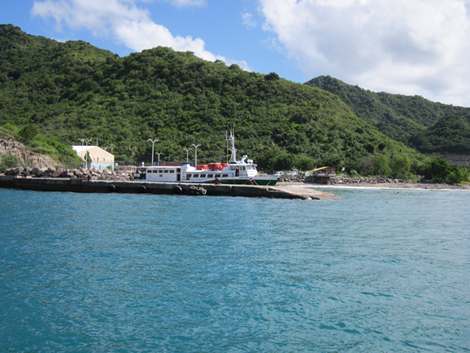
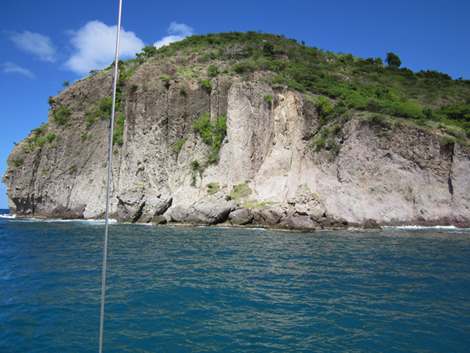 Views of the Little Bay harbour in Montserrat
- anchored scarily close to the rocks!

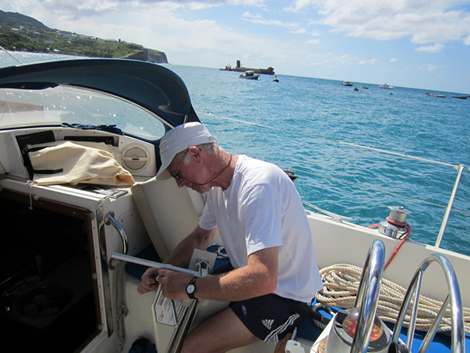 Rigging the Fortress anchor
(sand barge in the background) Rigging the Fortress anchor
(sand barge in the background)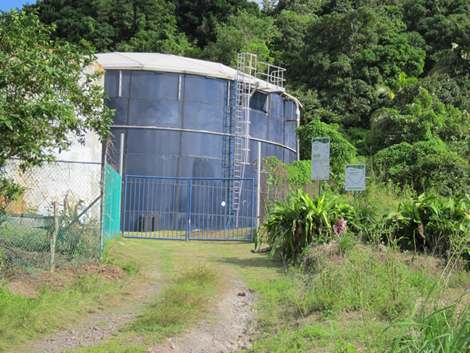 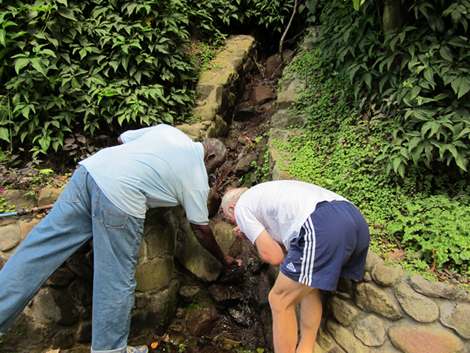 Water storage for the remaining
inhabitants
Ted and Joe sampling the spring water

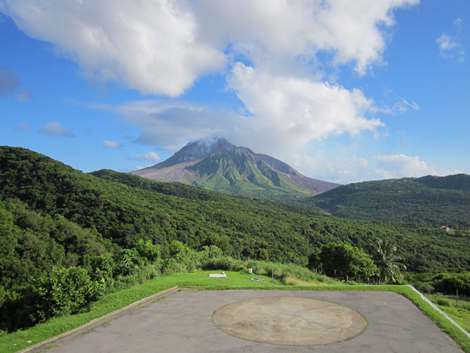 Views from the Montserrat Volcan
Observatory
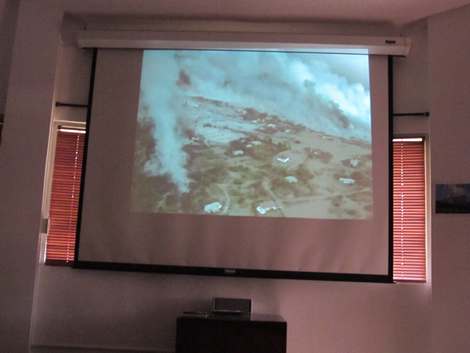 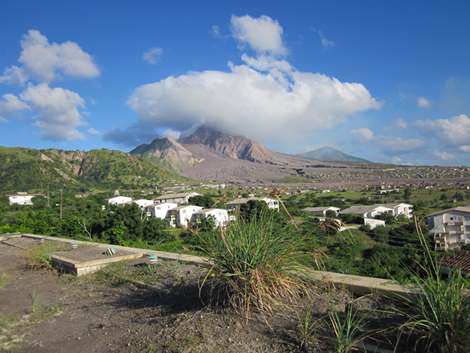 Film of the destruction of Plymouth and what
remains of the deserted town today
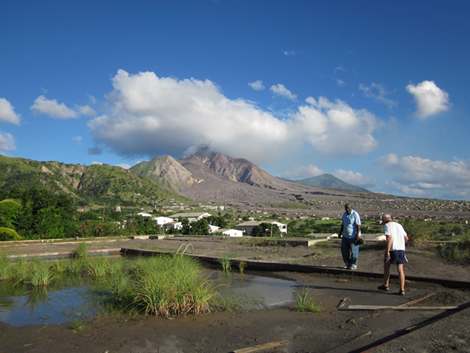
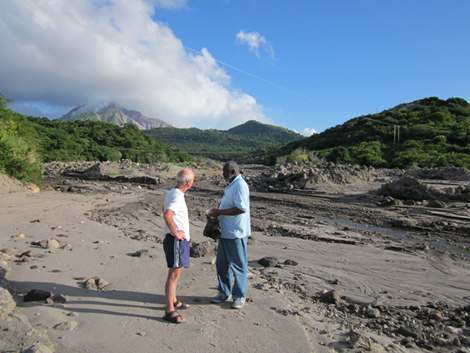 Walking on the swimming
pool! One
of the many lahars, source of the sand exports.

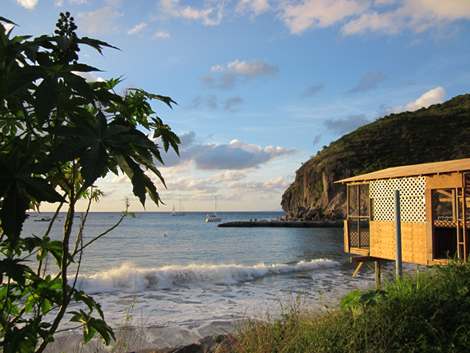 Views of the anchorage (slightly remote as
the camera batteries were giving out and I couldn't zoom!) The peaceful
appearance belies the restless night we spent.
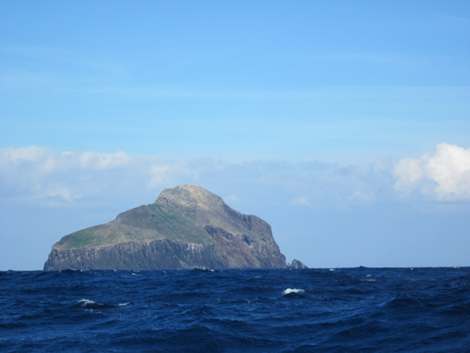  Approaching Redonda (the muffin shaped
island)
Someone seemed to have taken a bite out of this side
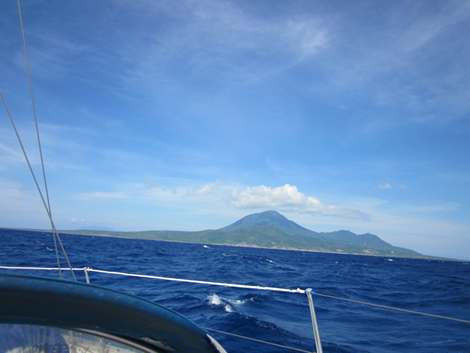
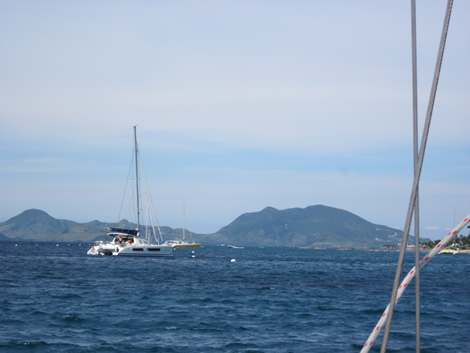 Approaching Nevis (hard to hold
the camera level with the size of the sea)
View of St Kitts from the Nevis anchorage (and see all the empty moorings -
they're obviously expcecting more
than
just us and the cat!)
|